Fences come in all shapes and sizes, yet in one way or another they all serve the same purpose: to separate one area from another. At Glen Villa, my garden in Quebec, the oldest fence separates a former farm field from a driveway.
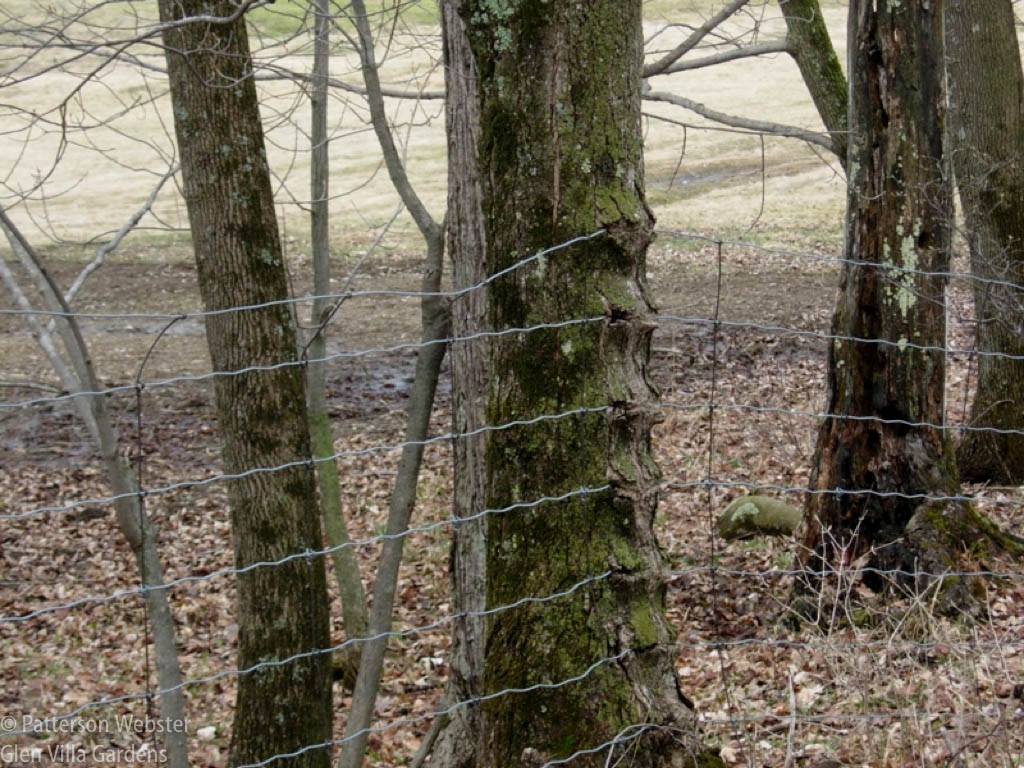
It’s obvious from the way the tree has grown around it that this barbed wire fence was put up a long time ago.
An equally practical but more decorative fence is the one I designed to protect shrubs from the deer that are such a plague in country gardens. I found the style so effective that I’ve used it in fences in the upper and lower fields, the Asian meadow and the Upper Room.
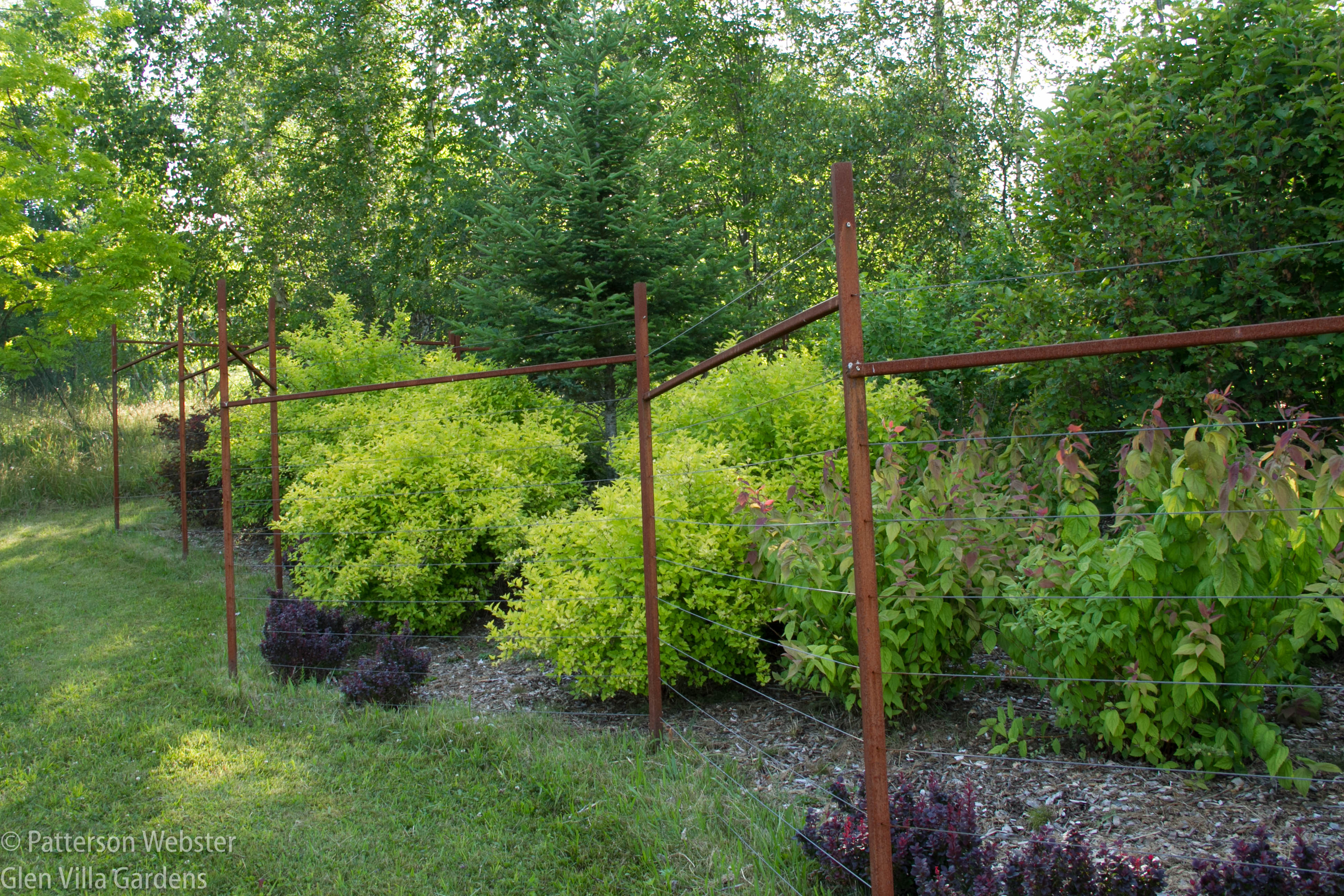
I designed this fence made of steel posts and wire cable to be as invisible as possible from a distance and attractive up close.
A totally impractical but decorative fence in the Asian Meadow uses ornamental Chinese tiles inset into a low wooden fence to delineate the edge of the meadow and separate it from a picnic area.
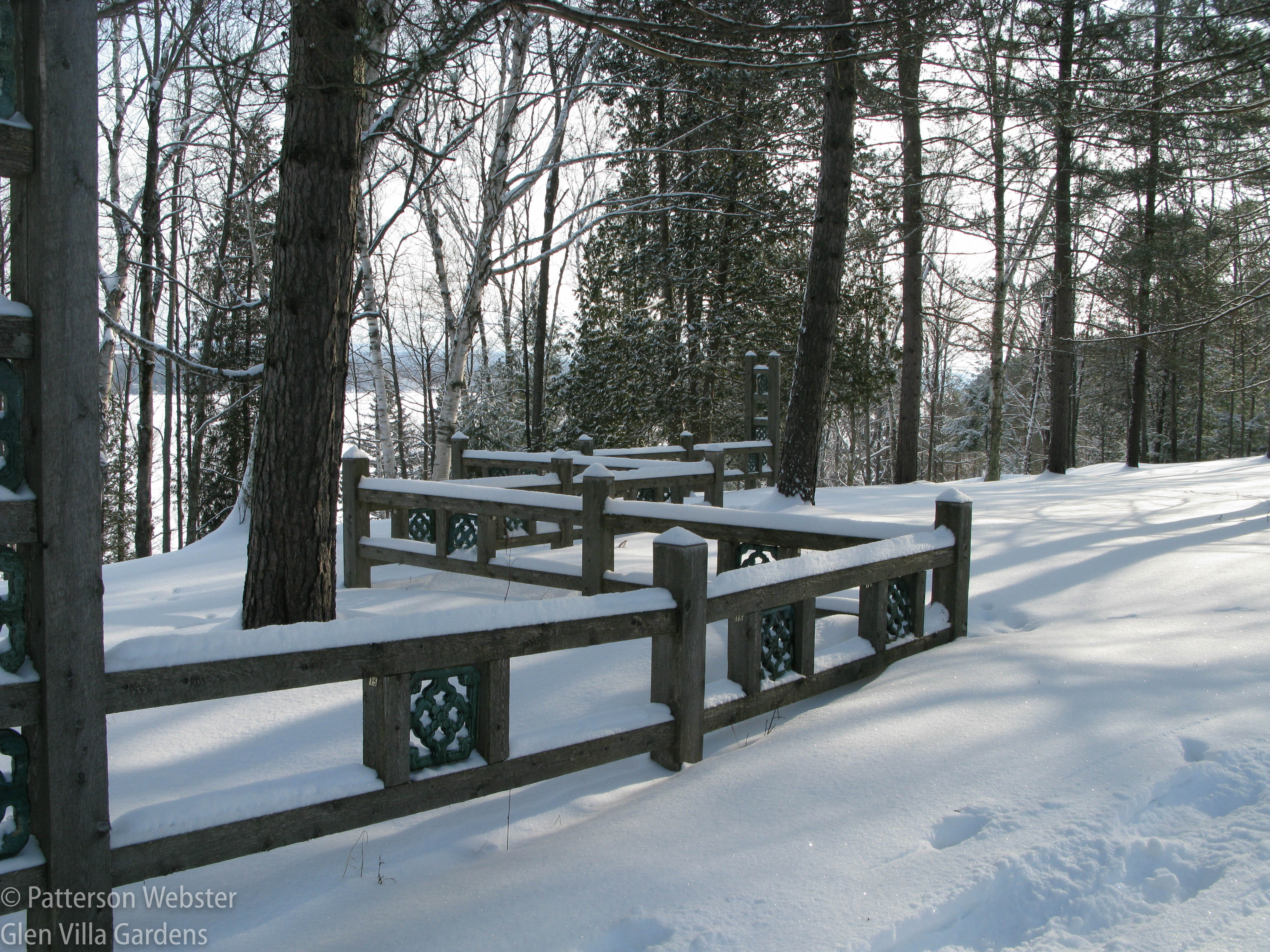
This photo shows how important hard landscaping can be in areas where snow comes early and stays late.
One of the most attractive deer fences I’ve seen is the one below, spotted in the Bridge Garden on Long Island. The casual arrangement of long sticks is a variation of a Japanese style.
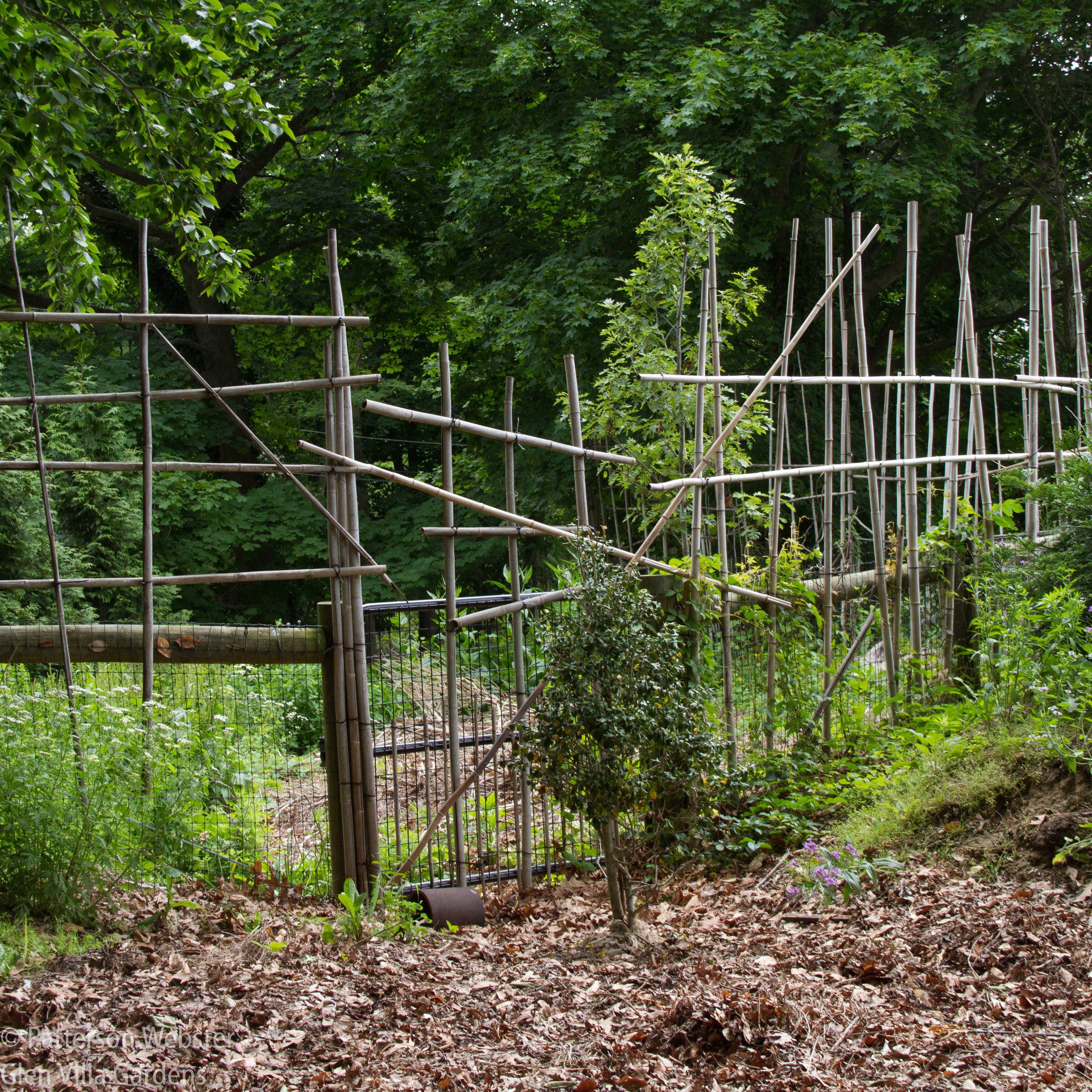
This simple and imaginative structure is an effective protection against the deer.
Compare it, for example, to this more formal fence at the Morikami Japanese Garden in Florida.
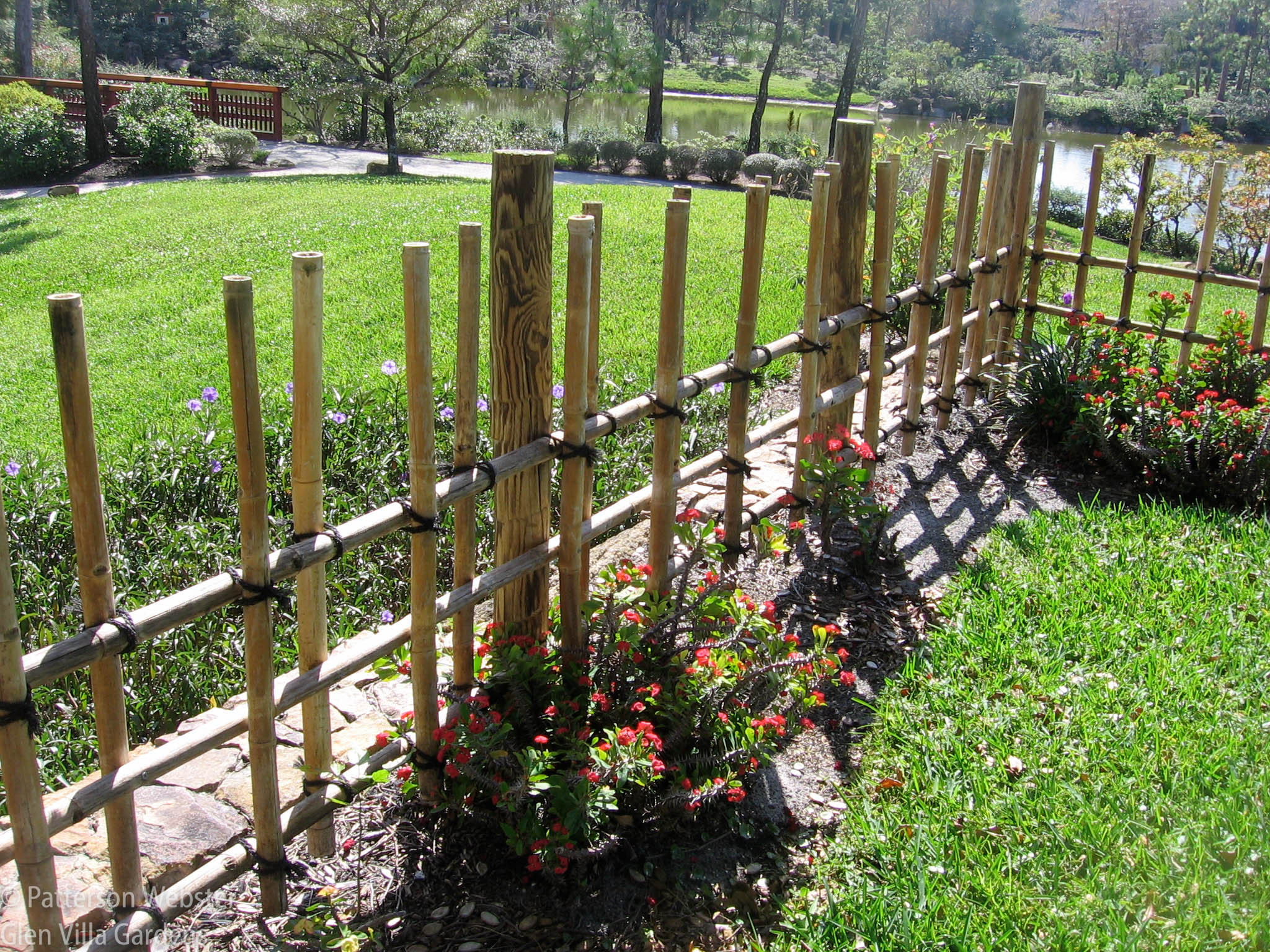
Tied bamboo fences are a staple of many Japanese gardens.
Some fences are purely practical but even practical fences needn’t be unattractive. I saw the one below at Madoo, the Long Island garden of the late Robert Dash, and while its material is utilitarian, its colour lightens the surroundings and adds interest to the plants at its base.
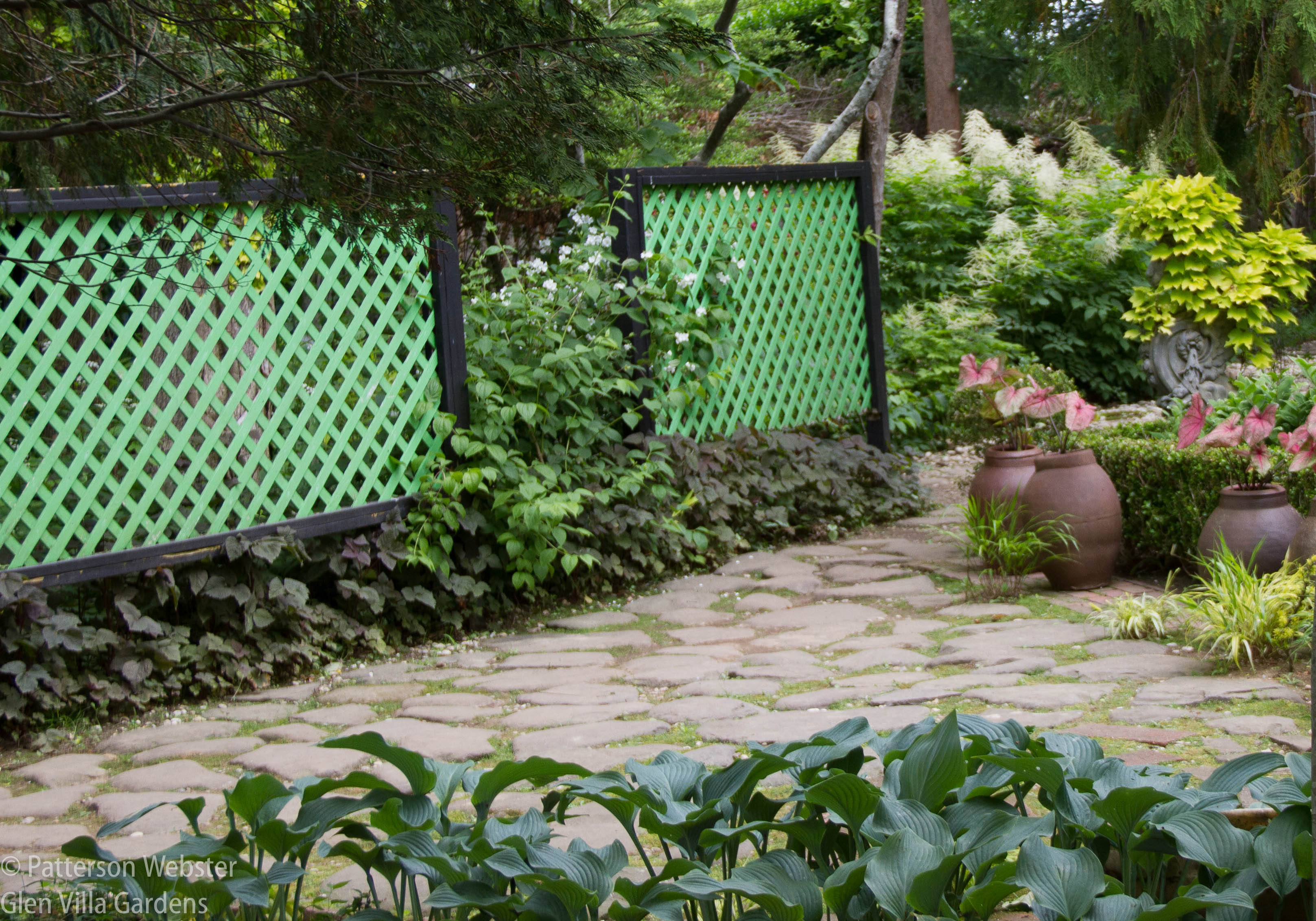
The strong green is repeated throughout the garden along with other strong primary colours.
Some fences make strong visual statements. At Veddw, the Welsh garden created by Anne Wareham and Charles Hawes, an opening into a farm field needed to be fenced. The ground on one side was much higher than the ground on the other, and the land sloped markedly from end to end. They solved this problem with imagination, and at low cost, by using slats of varying heights.
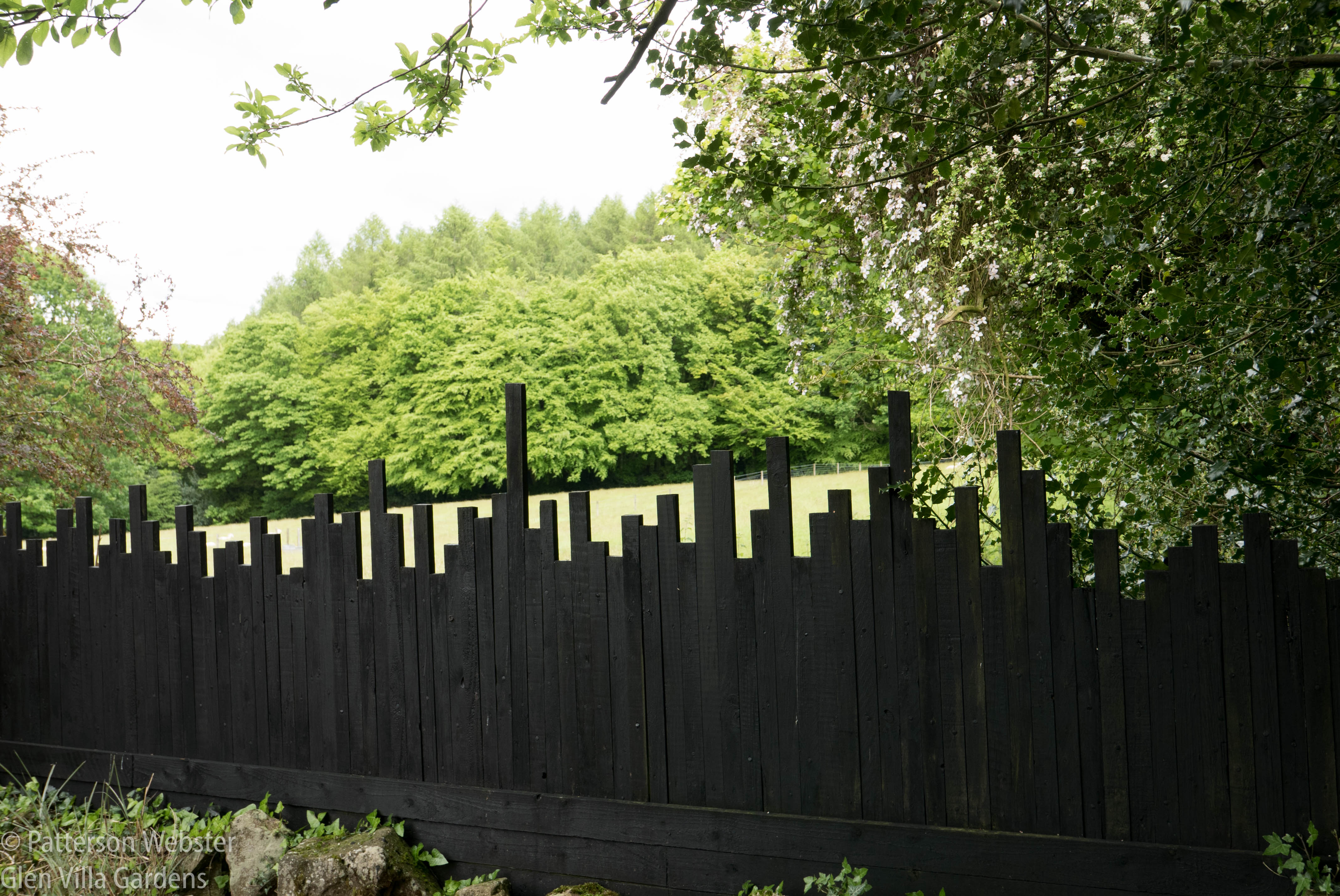
The uneven slats make a virtue of uneven ground and create an interesting silhouette.
A similarly imaginative fence is at The Grove, the garden of the late David Hicks, where the silhouettes of famous landmarks decorate one side of a very plain fence.
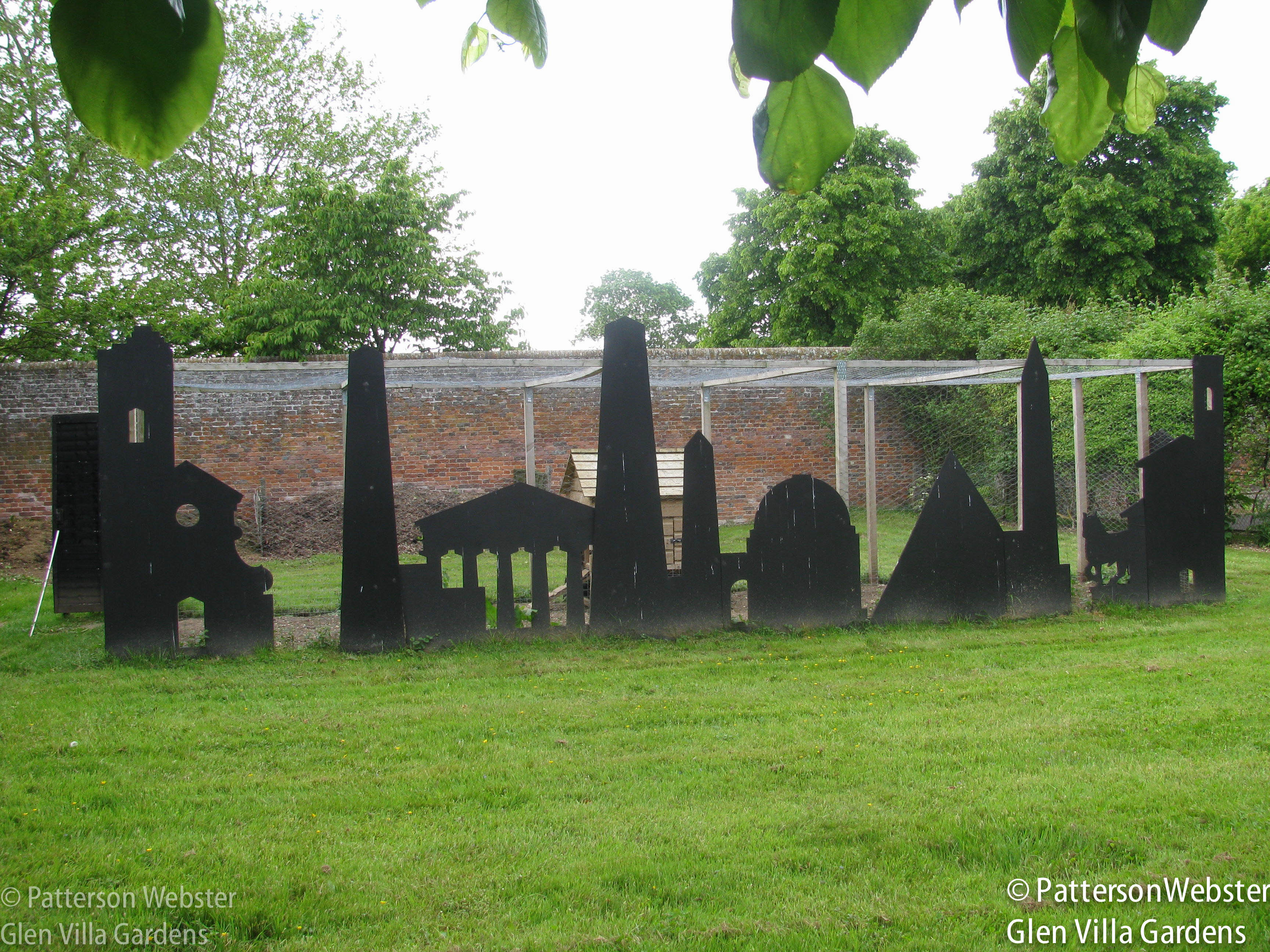
An over-the-top fence at The Grove features the Parthenon among other buildings. How many can you identify?
For a fence that illustrates the interests of the gardener, one designed by Christine Facer Hoffman, a medical scientist turned garden designer, tops my list. Ms Facer Hoffman’s dog is named Pi and this fence makes his name a reality… it is an endless sequence of numbers listing the decimal points of pi. The fence is also practical, keeping gravel out of the vegetable garden.
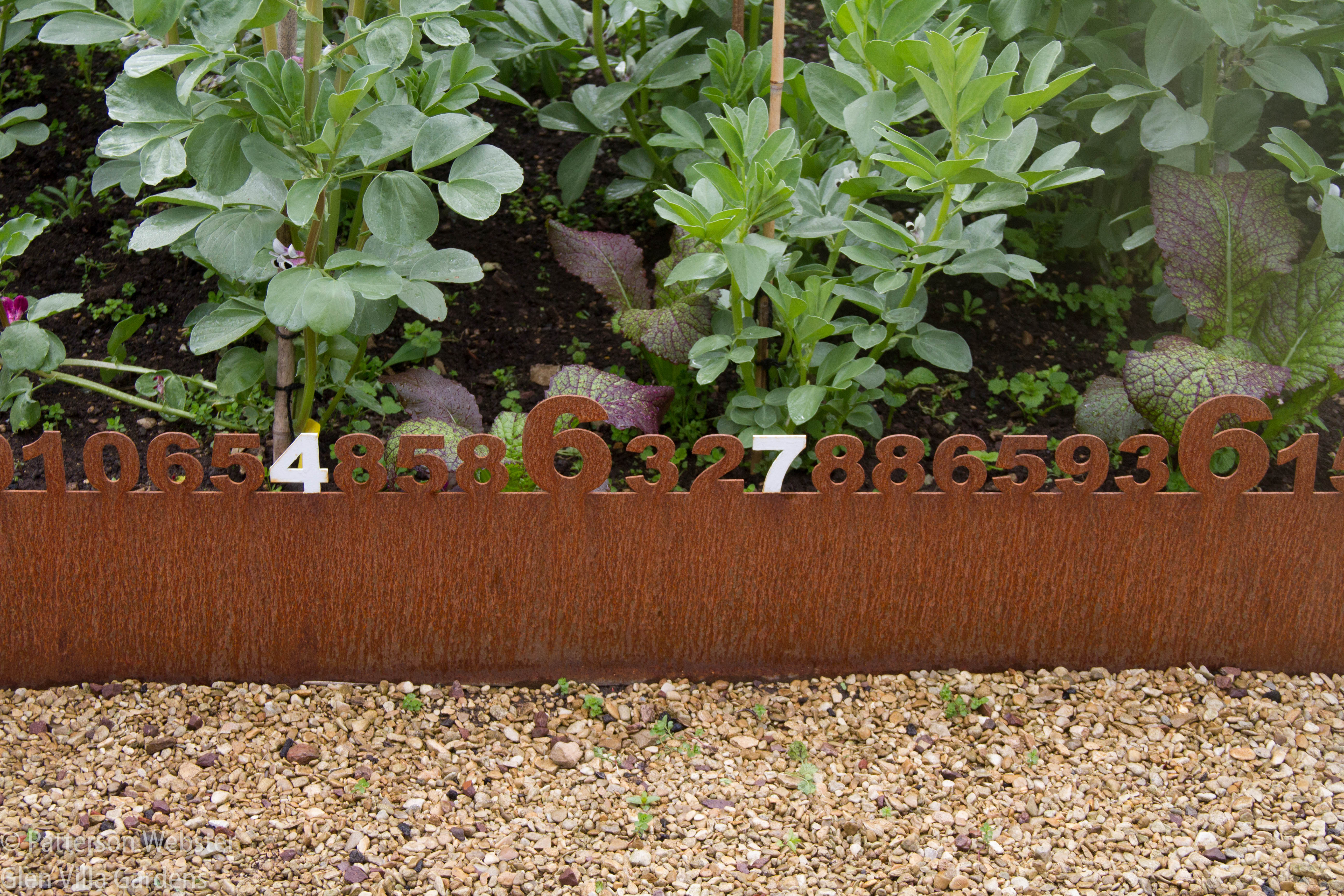
The low metal fence that surrounds the vegetable garden at Througham Court is aesthetically interesting. I wonder, though, if anyone has ever tripped over the raised numbers.
It’s easy to install a low-cost utilitarian fence, but how much more interesting it is to design one that suits the situation, the interests and the aesthetics of the garden owner. A wonderfully contemporary fence at Pensthorpe Nature Reserve combines open and closed spaces, a principle that informs many garden designs. At first glance, the fence is a solid barrier.

A mass of flowers soften the appearance of the fence.
But as you walk alongside it, the fence opens to allow flowers to peep through.
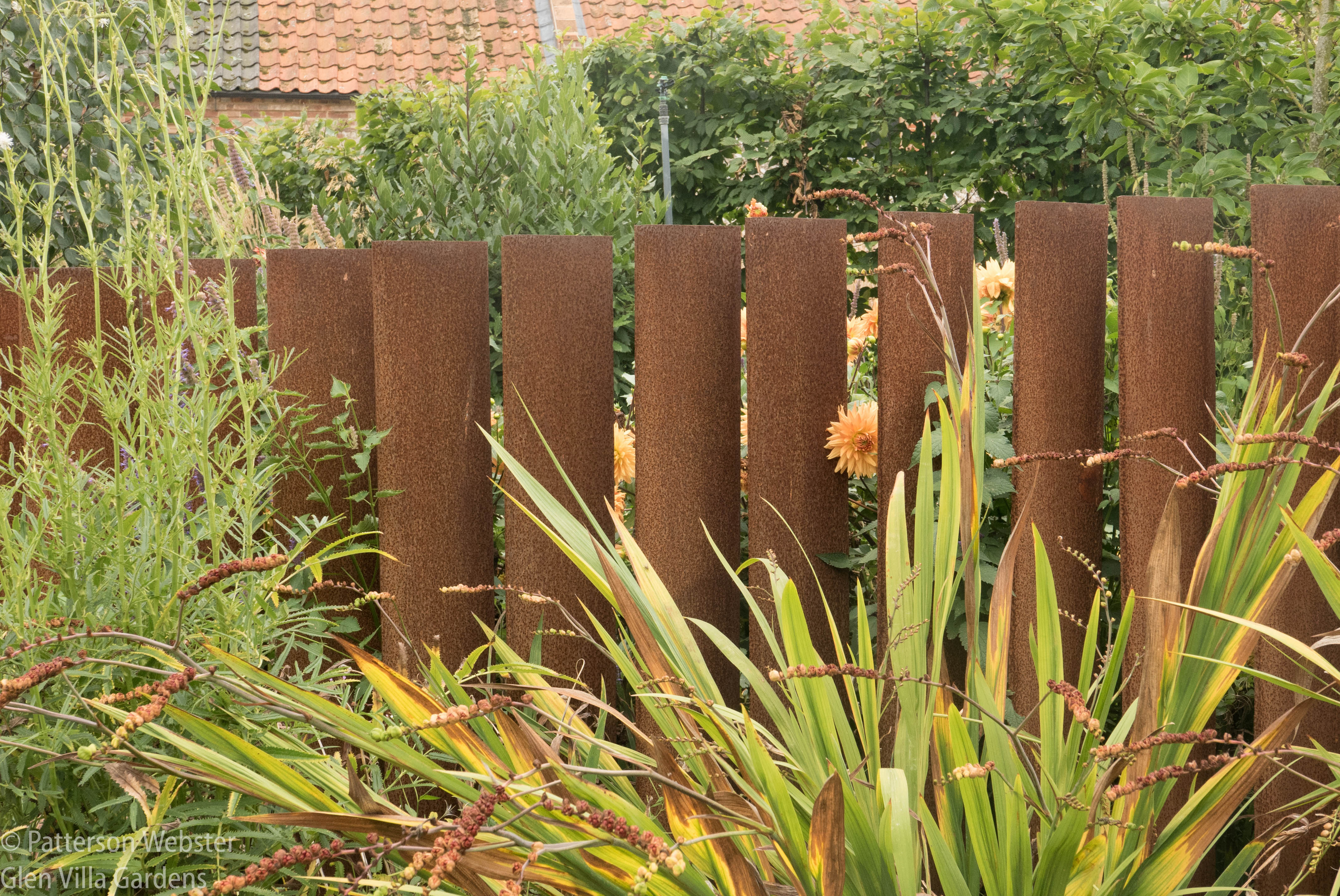
I love the combination of materials and colours in this Corten steel fence at Pensthorpe Nature Reserve.
Designing a fence like this takes skill and imagination. Add the wonderfully toned plants and you have a winner.






Having recently pulled a fawn out of wrought iron fence (yes, mum watched patiently) I see danger in the beauty of some of the designs. Then again, why does Huck Finn always come to mind!
Ouch, I can hardly imagine how painful that was for the fawn, and how difficult for you. Not a pleasant adventure.
The best part was Mummy moved to the other side of the fence and watched from there leaving me on the other side of the fence to do my thing after a little five minute stare down. I found that little maneuver rather heart warming in her state of desperation. All ended well and was quit thankful that Big Daddy wasn’t around as my hind quarters were totally exposed!!!!!
I wondered about Daddy. Lucky he wasn’t around.
Goodness. We complain about possums and rabbits invading our gardens but at least we don’t have to cope with deer! That is a lovely deer fence you put up with the cross wires almost disappearing from view. And an interesting collection of other fence designs you illustrate. Sadly, the most common fence in urban areas in this country is the truly awful, 2.2 metre prison wall of vertical lengths of tanalised pine, left unadorned and unstained.
There are some wonderfully inventive people out there, Abbie. I had a dozen other photos I could have shown, and may some other time.
As for deer, they are a scourge. They’ve chomped two clumps of hostas back to nothing three times this summer, and the hostas keep trying to recover. Hardy plants, indeed.
You’ve lassoed some great ideas in this post, Pat. It makes me want to follow up with some ideas I’ve seen. If I do, I’ll tag you in the post.
I could do another post or two on the same topic, Helen. I’m always impressed by people’s creativity.
What an excellent group of innovative fence examples! I especially liked the deer fence on Long Island and your steel and wire one. It’s so hard to make them fit in, when they need to be functional, too.
I was mightily impressed by the Long Island fence. I think it started life as an ordinary four foot fence, then as the deer became more interested (more aggressive? better jumpers?) they added on the random sticks. I think it is really effective visually.
I love so many of these fences, but, your design is fantastic.
Thanks, Gail. The design worked out well and does its job of keeping shrubs and deer apart — that’s the most important thing!
This reminds me that our back fence is just about at the point where it needs to be replaced. Maybe we’ll try something a little more creative.
Or maybe not? Do I remember correctly that your fence is a wooden one that blocks the view of garbage cans? If so, a wooden fence does the job well.